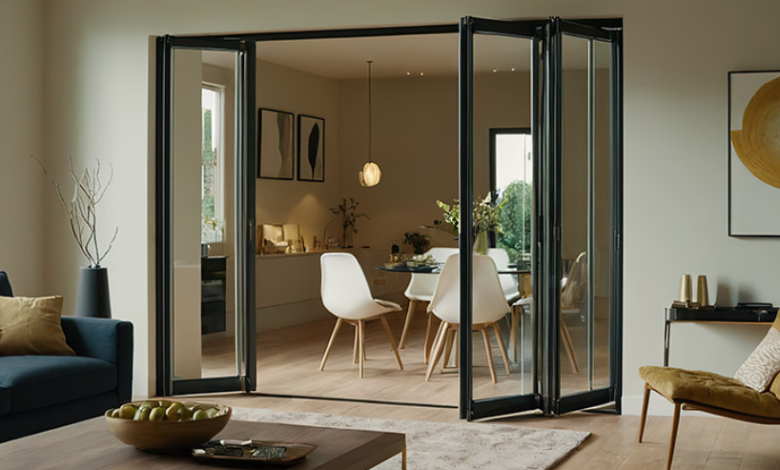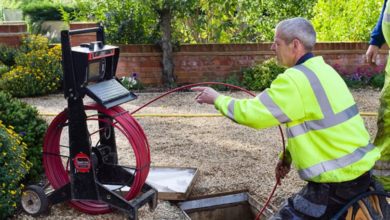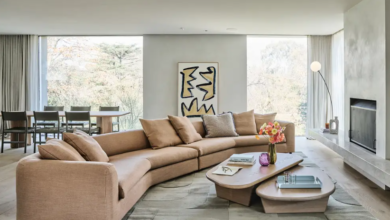6 Key Reasons Sliding Doors Are Transforming Modern Living

In a time when the lines between form and function are blurring, modern homes demand smart solutions that add both value and versatility. Among the most overlooked innovations in contemporary architecture is the sliding door. Once confined to closets or utilitarian settings, sliding doors have re-emerged as a stylish, space-efficient, and surprisingly transformative design element.
I learned this first-hand during a recent renovation of our 1970s home. What began as a need to improve traffic flow between the living room and patio quickly turned into a design revelation. Installing a sliding door not only brightened the interior but also made the entire home feel more expansive and breathable. It redefined the way we used the space—from how we entertained guests to how we enjoyed quiet mornings.
Whether you’re considering an upgrade or building a new home, here’s an in-depth look at why sliding doors are more than just doors—they are lifestyle enhancers.
What Is a Sliding Door?
A sliding door consists of two or more panels, with at least one panel gliding horizontally on a track. It opens sideways instead of swinging in or out. This makes it ideal for areas where space is tight or where unobstructed views and seamless transitions are desired.
Types of sliding doors include:
- Glass sliding doors (used for patios or balconies)
- Pocket doors (which slide into the wall cavity)
- Barn doors (mounted on external rails, often seen in modern farmhouses)
- Bypass sliding doors (commonly used in wardrobes and closets)
6 Key Reasons to Choose Sliding Doors
1. Space-Saving Efficiency
Traditional hinged doors require a clear area to swing open—often around 8 to 10 square feet. Sliding doors eliminate this requirement, making them ideal for:
- Small apartments
- Closets or pantries
- Narrow hallways
- Bathroom or ensuite entries
My Insight: We replaced our bedroom’s inward-opening door with a sliding barn-style door. It freed up nearly 9 square feet, enough space to fit a small armchair and reading lamp.
2. Seamless Indoor-Outdoor Flow
If your home opens to a garden, balcony, or deck, a sliding glass door can beautifully dissolve the boundary between indoors and outdoors. This design creates a panoramic view and a fluid connection with nature.
Design Expert Tip: Use large, floor-to-ceiling sliding glass doors in living rooms or kitchens for an extended visual landscape and added natural ventilation.
3. Maximised Natural Light
Because they typically feature expansive panes of glass, sliding doors allow sunlight to penetrate deeper into your home. This not only brightens up dark corners but also reduces the need for artificial lighting during the day.
My Experience: After installing a triple-glass sliding door in our dining area, the entire mood of the space changed. Mornings became more energising, and evening dinners were often lit by golden-hour sunlight.
See also: How to upkeep your motorhome interior
4. Energy Efficiency with Modern Materials
Today’s sliding doors are engineered with thermally efficient materials that help insulate your home. When fitted with double or triple-glazed glass and weather seals, they prevent drafts and retain indoor temperatures effectively.
Performance Features Include:
- Low-E glass coatings
- Argon gas between panes
- Composite or uPVC frames
- Insulated core panels (for non-glass doors)
Pro Insight: Look for ENERGY STAR-certified models for optimal thermal performance.
5. Clean, Minimalist Aesthetic
Sliding doors support modern and minimalist interior design philosophies. They offer a sleek, streamlined look, often blending into walls or aligning flush with flooring. Their subtlety makes them a favourite in Scandinavian, industrial, and contemporary homes.
Architectural Bonus: Sliding doors can be customised with frosted, mirrored, or tinted glass for added texture and privacy without compromising the clean lines.
6. Accessibility and Easy Operation
Because they glide horizontally, sliding doors are easier for elderly individuals or those with mobility challenges to operate. They require less effort compared to heavy swing doors and can be automated with sensors or soft-close systems.
First-Hand Use Case: My mother-in-law, who lives with arthritis, finds the sliding door in her bedroom much easier to manage than traditional knobs and hinges.
Merits and Demerits of Sliding Doors
Merits
| Feature | Benefit |
| Space-Saving | Ideal for compact or busy spaces |
| Versatile Use | Works as room dividers, exterior access, or closet enclosures |
| Sleek Appearance | Clean lines and modern visual appeal |
| Natural Lighting | Boosts daylight penetration |
| Accessible Design | Easier for kids, seniors, and people with disabilities |
| Energy Efficient | Modern models reduce heat loss and improve insulation |
Demerits
| Concern | Drawback |
| Track Maintenance | Tracks can collect dirt or debris and require regular cleaning |
| Security (for exterior doors) | Requires quality locks and shatterproof glass for safety |
| Installation Complexity | Wall cavities or structural changes may be needed for pocket systems |
| Limited Ventilation | Only one panel usually opens unless it’s a multi-panel system |
| Cost | Custom or motorised models can be expensive |
Types of Sliding Doors & Where They Work Best
| Door Type | Ideal For | Material Options |
| Glass Sliding Door | Patios, decks, sunrooms | Aluminum, uPVC, timber |
| Pocket Door | Bathrooms, en suites, small rooms | Wood, glass, composite |
| Barn Door | Bedrooms, offices, pantry entrances | Wood, reclaimed timber, MDF |
| Bypass Door | Wardrobes, storage areas | Mirror, wood, metal |
FAQs About Sliding Doors
1. Are sliding doors secure?
Yes, modern sliding doors come with multi-point locking systems, anti-lift devices, and shatter-resistant glass. You can also add security bars and smart locks for extra safety.
2. Do sliding doors let in drafts or leak heat?
High-quality sliding doors with insulated frames and double-glazed or low-E glass are highly energy-efficient. However, cheaper models may allow some heat transfer.
3. Can sliding doors be customised?
Absolutely. You can choose from a variety of sizes, frame finishes, glass types (clear, tinted, frosted), and handle designs. Some even include integrated blinds or insect screens.
4. How do I maintain a sliding door?
Regularly vacuum or wipe the track to prevent jamming. Lubricate rollers and hinges once or twice a year. Check weather seals for wear, especially before seasonal changes.
5. Is a sliding door better than a hinged door?
It depends on your space and design goals. Sliding doors save space and offer a cleaner look, while hinged doors allow full opening and may be more traditional in style.
6. Are sliding doors suitable for offices?
Yes. Sliding glass doors are increasingly popular in corporate settings to create transparent, collaborative spaces without sacrificing acoustic privacy.
Final Thoughts: A Doorway to Modern Simplicity
Sliding doors are no longer just a functional element—they are a powerful statement of modern, adaptable, and efficient living. From saving space and boosting energy efficiency to elevating your home’s design aesthetic, their benefits extend far beyond the doorway.
Having incorporated both glass and barn-style sliding doors in our home, I can confidently say they’ve reshaped how we live day-to-day. They have made our spaces brighter, more connected, and noticeably more functional. Whether you’re remodeling a city apartment or building a suburban retreat, sliding doors might just be the smartest design decision you make.





